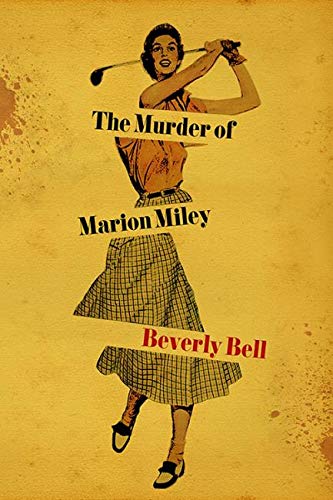Given that The Murder of Marion Miley is about the murder of a talented and in her time, well-known, American amateur golfer, I debated whether to place this review in my golf-related blog, Will o'the Glen on Golf, or my book-review blog, Will o'the Glen on Books. Solomon-like, I decided to have it both ways and post it in both.
***************************************
Though this book reads like fiction, Marion Miley was a real person, and the broader outline of events described in the book actually happened: 27-year-old Marion and her mother, Elsie, were shot and killed during a late-night break-in and robbery at the Lexington, Kentucky, country club where they shared an upstairs apartment. Marion’s father, Fred Miley, formerly employed at the Lexington Country Club, was still married to her mother, but had taken a job at another golf club, in Cincinnati, Ohio, and lived apart from his wife and daughter.
Marion was a well known amateur golfer who competed against, and often defeated, such legends of the women’s game as Glenna Collett Vare, Babe Didrikson, and Patty Berg. Amateur golf being a much more glamorous and high-profile game at the time, Marion was a well-known name, and rubbed elbows with such famous personalities as Bing Crosby, and the former British king, Edward VIII, and his wife, the twice-divorced American socialite Wallis Simpson.
The timing of the events recounted in the book, just over two months before America’s entry into the Second World War on December 7, 1941, meant that this story has largely been relegated to a footnote in history. Beverly Bell’s efforts to bring the story of Marion’s death to the attention of the public 80 years after the fact are well intentioned, but, in my assessment, fall short of the mark.
The novelization of true events is a problematic task, even when preceded, as was done in this case, with an author’s note disclaimer that “(a)ll dialogue and journal writings are imagined.” Given the amount of the text that is given over to such imagined entities, the imaginary content seriously overtakes the factual, and I couldn’t help but think, after closing the cover on the final pages of the book, that this was a case of a strong magazine article being teased out to book length, and doing a disservice to the story in the process.
I found the book’s structure problematic, opening as it did with a clinical—and not for the squeamish—description of Marion’s injuries from the two bullets that took her life; even more problematic were the subsequent random meanderings of the narrative voice between a variety of points-of-view: the police investigating the crime; Marion’s father, as he attempts to deal with the loss of both his wife and daughter at one stroke; Marion’s best friend, Frances “Fritz” Laval; and the perpetrators of the murders. The constantly changing voice was confusing, and made it difficult to keep track of both events and characters—some of whom, it turns out, were fabricated from the whole cloth by the author.
Given the fact that the publisher, South Limestone Books, is an imprint of the University of Kentucky Press, I was also surprised by instances of clumsy phrasing and sentence structure which an attentive and competent copy editor would have caught and corrected. Such matters detract from the overall impression of a book, more so perhaps for technically savvy readers than for others, but they can be like little trip-stones that interrupt one’s reading by interjecting a jarring sense of discord into the flow of the story.
I will stop short of a full dismissal of this book, but I cannot, in conscience, give it a strong recommendation. Marion Miley’s life and tragic death is a story that was worth the telling, and it’s unfortunate that this effort falls so far short of what the story of her life deserved, because given its relatively minor status in the larger scheme of the events of the time, even within the confines of the game of golf, it is unlikely that there will be another attempt.


